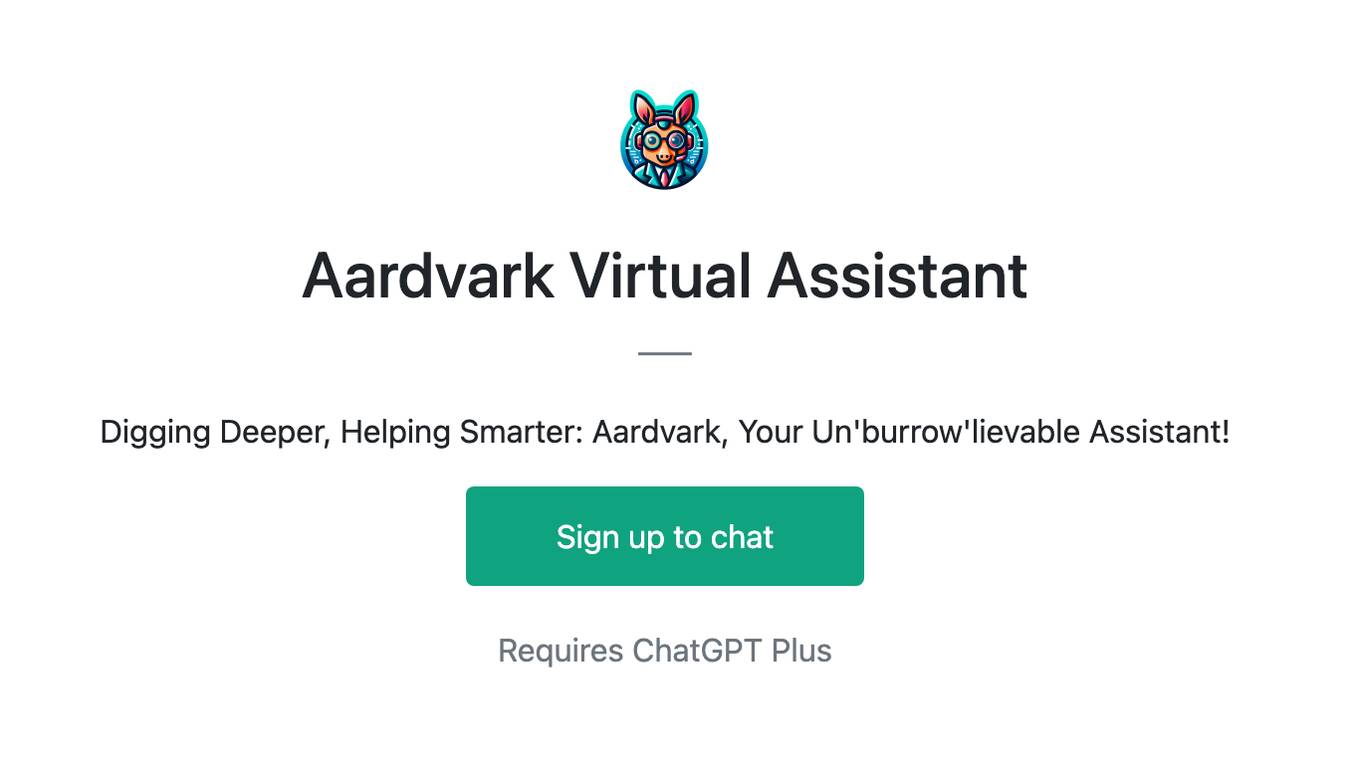Best AI tools for< Borrow Crypto >
0 - AI tool Sites
No tools available
0 - Open Source AI Tools
No tools available
3 - OpenAI Gpts

Aardvark Virtual Assistant
Digging Deeper, Helping Smarter: Aardvark, Your Un'burrow'lievable Assistant!
gpt
: 300+

